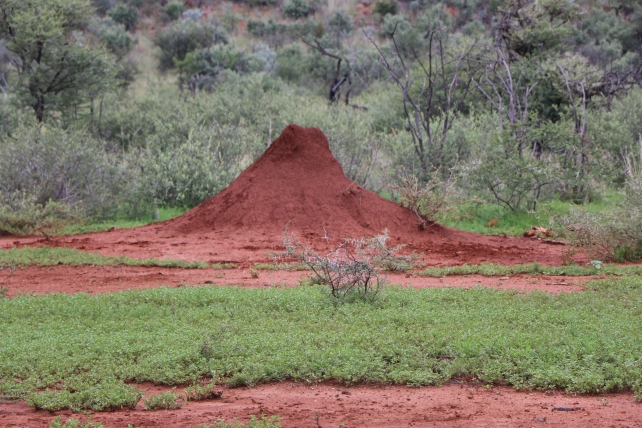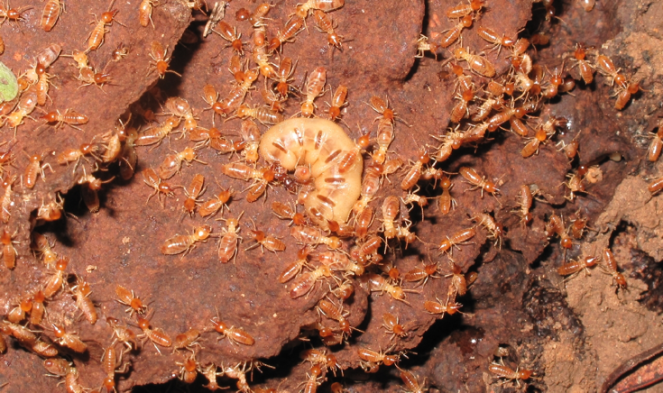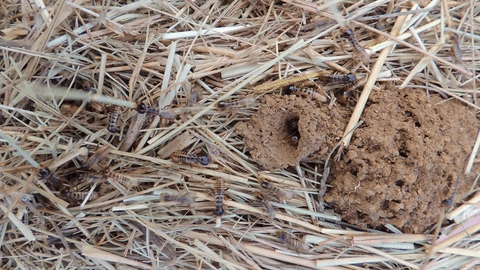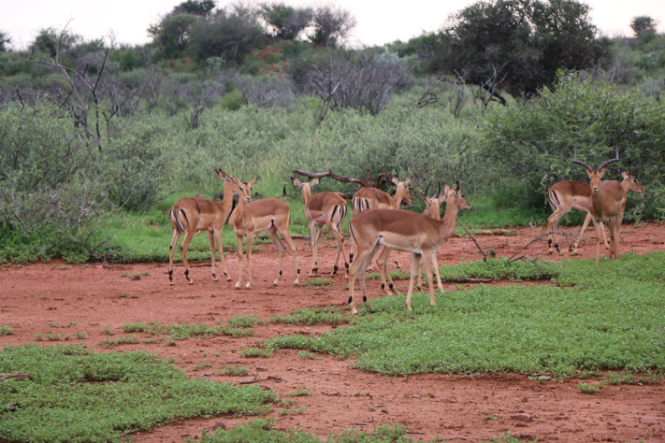
Dear Traveler,
As our trembling vehicle glides to a stop in front of a mound of mud, which might seem unimpressive after the mighty rhinos we have just passed. However this seemly insignificant mound of dirt is a feat of nature, the pyramids of the insect world.
This cone-like structure has not been constructed by one individual animal but by millions of termites.
This is only the beginnings of a mound with established nests reaching 2-3 metres high.
Although the structure looks relatively simple on the outside, inside there is an extensive system of tunnels and shafts that act to ventilate the underground nest and stop the colony from baking in the hot African sun.This natural air conditioner is super effective and if you place your hand above the mound you will feel hot air escaping.
Pretty damn cool, right?
The underground nest, where the termites actually occupy, is composed of a series of gallery chambers in a variety of shapes and sizes and can spread for kilometres in every direction.
Workers construct the mound by layering soil, which is then strengthened with spit that is secreted from their mouths. The workers are the smallest but the most numerous caste. They are blind, wingless and sexually immature (like most politicians) and are in charge of maintaining the nest and the other dependent castes in particular the reproductive castes. The queen termite is entirely devoted to producing eggs, and is much larger than the other caste having an incredibly swollen abdomen. A termite queen can live for as long as 30 years.

Termites are an organised society that act like a whole; a superorganism. Through their collective efforts they can produce intelligent behaviour such as the construction of this natural ventilation system. This is a result of individual termites following basic rules which eventually culminate into a behaviour. It is through studying these social insects that Neurobiologists believe they can understand how the human brain works. As individual termites in the colony behave remarkably similar to neurons in the brain. As such, scientists can use these social insects as models of decision making in complex organisms i.e you!
Colonies share information across individuals creating a ‘shared social brain‘ This collective behaviour comes at a cost to the individual termites as through social behaviour the mushroom bodies (basically the insect brain) have decreased in size.
The South African bushveld is teeming with life. Each individual creature utilises a unique method of survival in these extreme conditions. This is why, dear traveler, we should look beyond the big game during our drive as their is so much diversity in this beautiful landscape.

Close by to the mound we see a flash of brown, with a leap an impala enters the scene. Followed by another and another. They stop to graze near the mound but something startles them and they scatter back into the bush.

Before we start our journey again there is a noise in the distance. The call is constant and the animal is distressed. What could it be? Has it been spooked by the same thing that made the impala scatter?
Who is crying in the bush?
All will be revealed on Friday!
Relive the journey: The Journey Begins
Sources:
- David Attenborough in South Africa: https://www.youtube.com/watch?v=xGaT0B__2DM
-
Biology of Termites: a Modern Synthesis
*all images and gifs are owned by Samantha Smyrke unless otherwise stated
Excellent I am enjoying my trip through the African bush.most entertaining
LikeLiked by 1 person
I am glad you are enjoying it! what do you think the next animal might be?
LikeLike